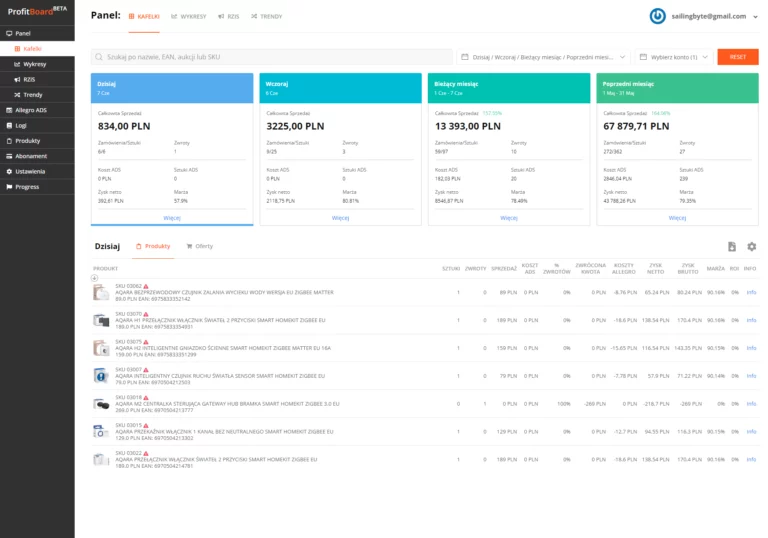Countless times the developers and software houses (including us) receive a question: ‘How much will it cost?’ For such stated question without any other context there is only one answer: ‘It depends’. Apart from the obvious lack of sufficient details in this question, there is also the case of pricing models. There are various types of scopes of work. You may want to just develop a product, which usually is pretty straightforward work. However, your project might involve many stages and subproducts and you may also need the ongoing post-development maintenance processes. We have already discussed Fixed Cost and Time & Material pricing models. Now, the time has come to introduce yet another model Sailing Byte uses, a hybrid pricing model for software development.
Please note that there is another aspect of hybrid pricing model, that this article is NOT about: it is applying flexible/hybrid pricing for your end-users as SaaS owner. Here I only focus on pricing that is applied by software house to their client.
Pricing Models – Fixed Cost and Time and Materials
For software development few pricing options just do not make any sense, while they would be usabe for other cases. Such examples are:
- Per-user pricing – when you bill by number of users. This only makes sense as SaaS pricing model
- Freemium pricing – this also doesn’t make sense for software development.
Other standard options that would only make sense in proper context:
- Tiered pricing – this may make sense, but not as a defined tiers. It is rather applied and negotiated between software house and client for each case separately. It may depend on many factors, not just amount of agreed montly workload.
- Competitor pricing – while this is of course some point of reference, but problem is that each software house is different. And comparing them just by price will definitely result in disappointment. You need also consider aspects such as specialization, efficency, security, stability and so on.
Getting back to naming, you might find that fixed price would be similar to flat rate pricing (if you consider “flat rate” as “fix”; although some consider “flat rate” same as “monhtly flat rate” in terms of subscribtion-like service). There is also consumption based pricing which is actually the same as time and materials. So beware that sometimes different names can acutally mean the same thing or one name can mean different things depending on context!
Getting back to hybrid pricing. To better explain what the hybrid model delivers, let us go through a brief reminder regarding the fixed cost and T&M pricing models.
Fixed Cost model in a nutshell
In this model, the client receives a certain price for a clearly defined scope of work that the developer performs. It is perfect for small projects, where no additional maintenance is needed. With a fixed cost model, most settings of the projects are clearly predefined and the coding is a straightforward task. We use simple tools and technologies to deliver predictable outcomes. The client is usually not involved in the development process within the fixed cost pricing model. The model also has some cons, such as no support included in the price or almost no margin for any adjustments or changes to the original development plan.
Time and Material model in a few words
If you have a product to develop, which will need maintenance afterwards or you plan to become our long-term customer, T&M is the way to go. Firstly, we will ask you about your needs. Based on them our developers will build the MVP (minimum viable product) by applying agile, iterative frameworks/tools such as Scrum (or ScrumBan/KanBan). You will pay monthly for the time we devote to your product and the technology needed to develop it (material).
It is the solution we use for complex products that will take a long time to develop and will most likely require maintenance. During that time there will be changes to requirements based on feedback you receive from the users. Thanks to that we will adjust the direction and the scope of work to create the highest quality product.
What is a hybrid pricing model for SaaS development?
As you can probably suspect, the hybrid pricing model will land somewhere in between the two previously described pricing models. It is very similar to the fixed cost model, however, it allows for additional flexibility. You can introduce some changes thanks to the time and material model.
Essentially, if you have roughly defined scope of work, but do not know details about it, and you would like to start development as soon as possible, then it is possible to assess amount of work within some kind of time and price range. If you want to start fast, then agreement might just have defined a price range, with a minimum of what you will be billed and maximum that allows you for some changes without additional paperwork.
The minimum allows you to have a basic functionality that fulfills software purpose. Imagine that during development process you investigate users and you find out that some additional functionality might be of great value. You don’t need to change scope of work – you just need to assign task in Asana. And if that task is not a significant change, and will not result in exceeding maximum for end invoice, then software house can do it without any additional paperwork or agreements.
When to Develop Software using Hybrid Pricing Model?
Several features indicate that the hybrid pricing model is the solution to choose.
Changing requirements
This is a common feature with the T&M model, if you know only a few requirements and the rest is unknown, T&M or hybrid models are the way to go. They enable you to add new features, or platforms, and change other aspects during the project. Additionally, you can still expect fast execution.
Many revisions required
You probably have a clear vision of the end product. However, not always clients realise how to get there. In such cases, hybrid pricing is a sound choice. It gives the chance to conduct multiple reviews and apply changes (if necessary).
There is a set deadline
Similar to fixed-price projects, the hybrid model is perfect for short-term projects with a fixed deadline. However, at the same time, it also adds other benefits, such as the ability to change the requirements and adjust the budget.
Benefits of the hybrid pricing model
The hybrid model has a few useful advantages that will be appreciated by many clients.
Cost-effectiveness
The hybrid pricing model allows clients to resign from some software development aspects that do not apply to their projects. This may lower the costs significantly. Saved resources can be devoted to adding services that you find crucial for the project’s success.
Client’s involvement
In many aspects, the hybrid pricing model is very flexible. One of the main areas is the level of the client’s involvement in the product development. You can choose to review the project after reaching important milestones. You can also choose to receive regular updates or communicate with developers via various channels with a greater frequency.
Boost in revenue growth
Price optimization allows for more customers to use products according to various plans. Therefore, there is no need to broaden the portfolio but simply offer various access based on the price paid. Thanks to that the revenue growth is accelerated and companies which use the hybrid model pricing reach a wider number of customers and also tend to retain them and maintain a greater relationship with them.
Customer-focused service
The hybrid pricing model is essentially the sweet spot between offering competitive prices and maximization of revenue potential. The clients do not have to overspend on services they do not use. Moreover, they have the possibility of customization and deciding what to spend the money on. This is in accordance with the fact that customers are used to paying more for extra features. Overall, the pricing is not increased out of proportion and makes customer experience.
Disadvantages of the hybrid pricing model
Undefined budget
Because the hybrid pricing model is flexible and you can adjust the model as you please, predicting the cost of the project is rather not possible before its commencement. It is intensified by the unclear requirements that are likely to change and affect the project price.
Uncertain start time
Even though the hybrid model guarantees work according to deadlines, the start of the project might not be too quick. This is because the preparation phase tends to be more time-consuming. It is a result of many factors that need to be agreed on with the client, such as the budget, project scope, or deadline.
Hybrid pricing model at Sailing Byte
Every project is different and requires completing different tasks. However, the approach and the terms of our hybrid pricing model are set. Let us introduce how the hybrid model looks like at Sailing Byte:
- we work in Agile and according to its 12 principles, which allows for changes in requirements, methods, and designs throughout the project.
- the final costs of project development are not determined or guaranteed due to the specificity of Agile software development
- the work on the project is settled monthly by paying an invoice issued by the 10th day of every month
- if any additional costs occur, (i.e. additional tools and technologies, travel costs, hotel costs) Sailing Byte obtains the Customer’s prior consent to cover them and then includes them in the next invoice.
- a detailed price list specifying hourly rates for every Role and Technology Stack of the Sailing Byte team is available for viewing in the form of the Price and Technology Table.
If you have any questions regarding the hybrid pricing model or are wondering which model might work best in the case of your project, do not hesitate to get in touch. Book a call today and start implementing your idea in real life with our help.




